Nun, Scientist, Artist, Saint: Meet Hildegard von Bingen
Saint Hildegard von Bingen (1098-1179), also known as the Sybil of the Rhine, is one of the most renowned figures from the European Middle Ages. She...
Iolanda Munck 18 July 2024
During the Middle Ages, illuminated manuscripts were first used in the Roman Catholic Church for liturgical services and prayers. The popularity of illuminated manuscripts spread to wealthy patrons looking for ways to express their devotion within the private sphere. Included in these manuscripts were elaborate illustrations displaying lively scenes and historical puns still relevant today. Discarding images is a unique online collection of medieval illustrations available on Tumblr and other social media platforms. Sadly, the project isn’t as active anymore (which we hope will change in the future!), but can still inspire you to delve into the fantastic world of medieval illuminated manuscripts. Here is a list of some of the best discarding images from the Middle Ages.
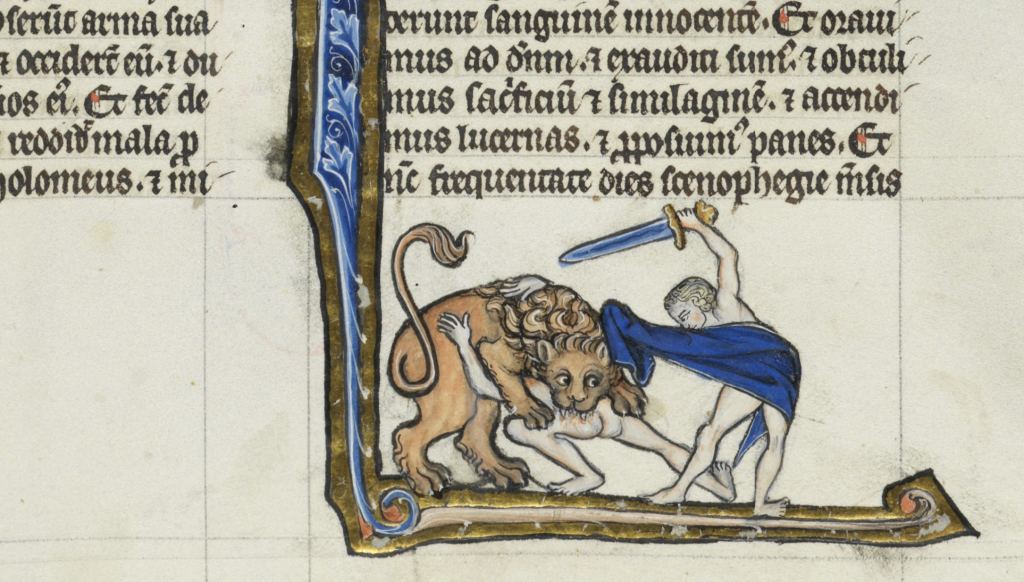
The Best of Discarding Images: Eusebius Sophronius Hieronymus, Biblia Porta, 13th century, Bibliothèque Cantonale et Universitaire de Lausanne, Lausanne, France. Biblissima.
First is the Latin Porta illuminated manuscript, created in the Franco-Flemish region at the end of the 13th century. Its text was written on parchment paper in St. Jermone’s Vulgate version of the Bible. Remarkably, this is one of the few remaining works decorated in this style from Northern France.
Furthermore, the manuscript contains 447 illustrations of ornamented initials. For example, on page 376r in the manuscript is an image of a “man-eater.” As displayed in the illustration, a lion eats a man whose lower body is exposed. Meanwhile, another man stands with a drawn sword as if he is about to strike the lion. (Which, of course, is impossible).
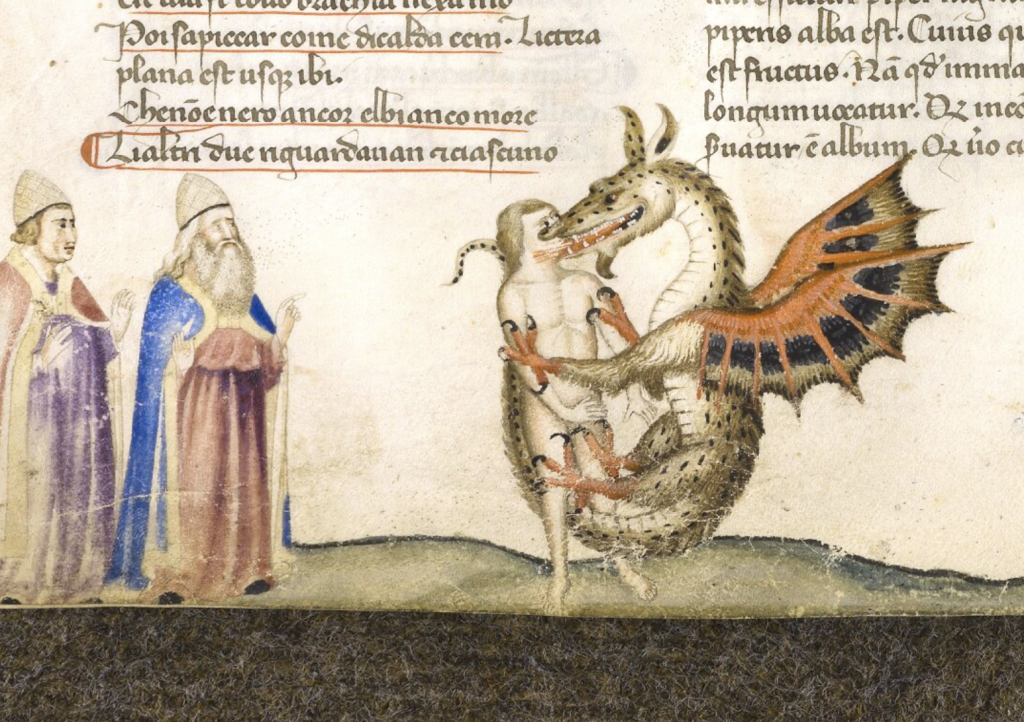
The Best of Discarding Images: Dante Alighieri, Divine Comedy, c. 1330-1340, Bibliothèque du château Chantilly, (MS 597, fol. 169v), France. Biblissima.
Next is an image from the Divine Comedy. The Italian poem was written by Dante Alighieri beginning in 1308 and completed by 1321. Although no original manuscript survived, many copies were made with imaginative illustrations. In the Divine Comedy, Dante and the Roman poet Virgil travel through hell and purgatory before finally reaching heaven.
However, in this specific image, Dante and Virgil observe the double metamorphosis between a serpent (who looks like a dragon) and Buoso. The image looks like the dragon is giving the man a hug (and maybe even a kiss).
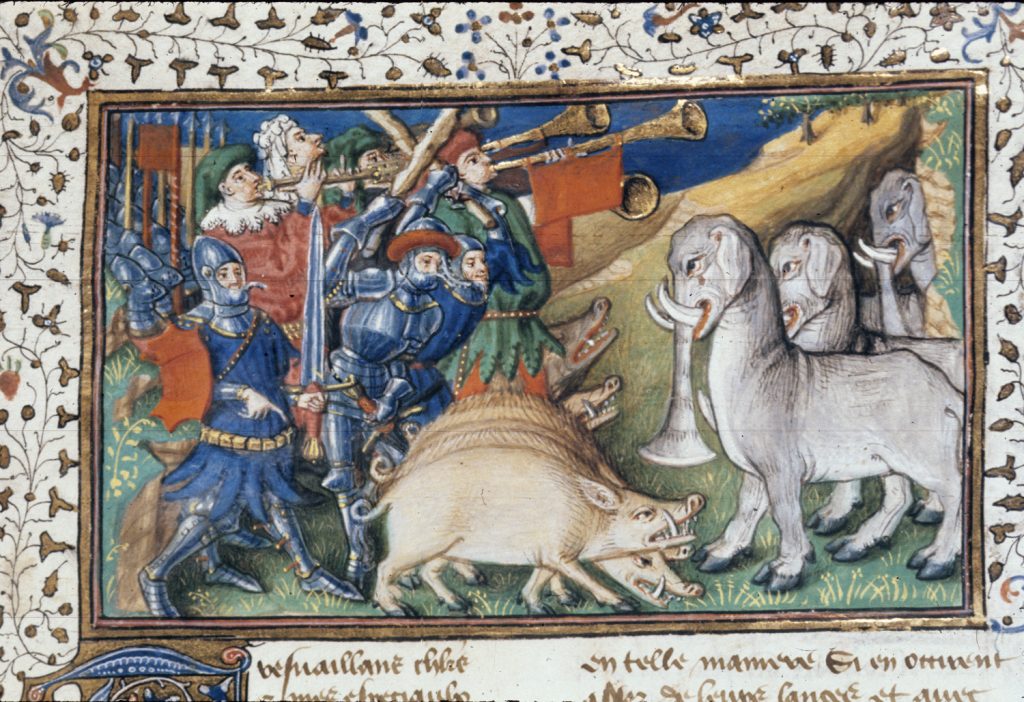
The Best of Discarding Images: The Book and the True History of the Good King Alexander, c. 1420-1425, The British Library (BL, Royal 20 B XX, fol. 57r), Paris, France. Library’s website.
While many manuscripts show mythological stories and creatures, there are images of real animals. For example, in the illuminated manuscript The Book and the True History of the Good King Alexander one can find an illustration of an elephant. Alexander the Great ruled most of the ancient world from 336 BCE until he died in 323 BCE. He is known for his brilliant military campaigns, winning territories from Egypt to India. As a result, his life was recorded in manuscripts such as this anonymous French version.
Thankfully, Alexander’s adventures were recorded through illustrations. In this miniature painting, King Alexander and his army are shown driving off elephants with pigs and musical instruments. Yet the image shows a delusional solution to a problem that music will not solve. Even better is the representation of an elephant’s trunk, which looks more akin to a musical instrument.
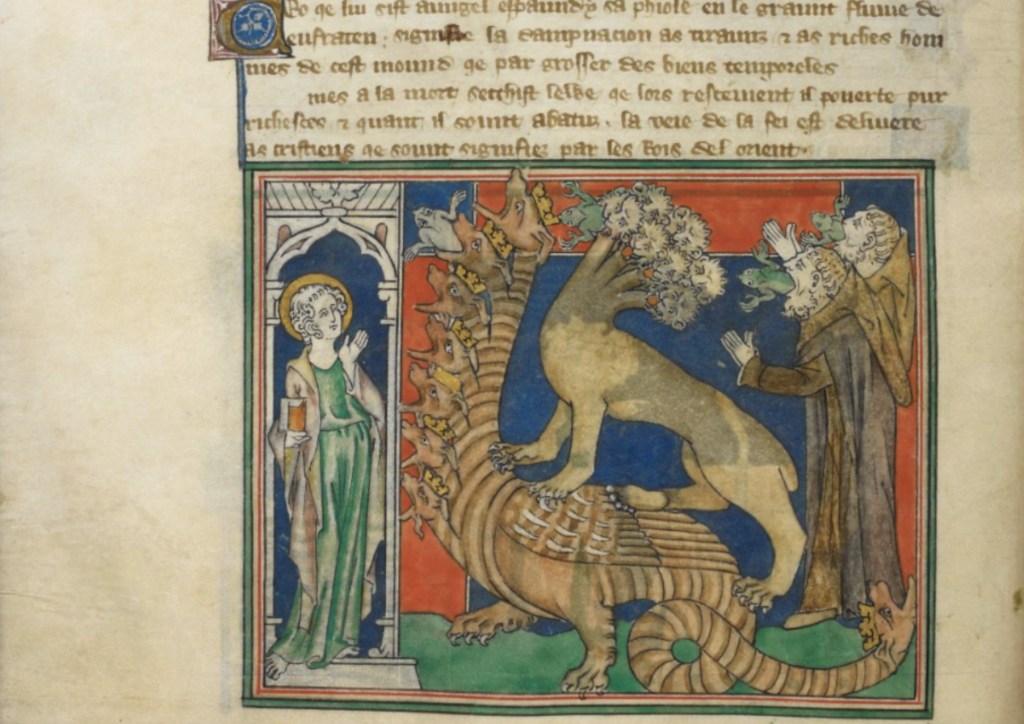
The Best of Discarding Images: The Queen Mary’s Apocalypse, c. 1300-1325. The Old Royal Library, (BL, Royal MS 19 B XV, fol. 30v), London, UK. The British Library.
Additionally, animals are used in medieval manuscripts to create a visual pun. For example, on page 30v in Queen Mary’s Apocalypse, the artist painted a scene of frogs emerging from the mouths of two false prophets. However, this visual representation of frogs and prophets was not uncommon. Since Mary’s Apocalypse is a prayer book, it focuses on The Book of Revelation from the Bible. In chapter 16, verse 13 it states; “I saw three unclean spirits like frogs come from the mouth of the dragon, from the mouth of the beast, and from the mouth of the false prophet”. Yet, in this context, “frog” is probably an allusion to the second Egyptian plague. (When referencing the Bible, the book of Exodus, chapter 7 discusses the plague of frogs.)
Therefore, the image of frogs emerging from the false prophets is a visual translation of the Bible. Still, the image is extremely odd in terms of medieval illustrations.
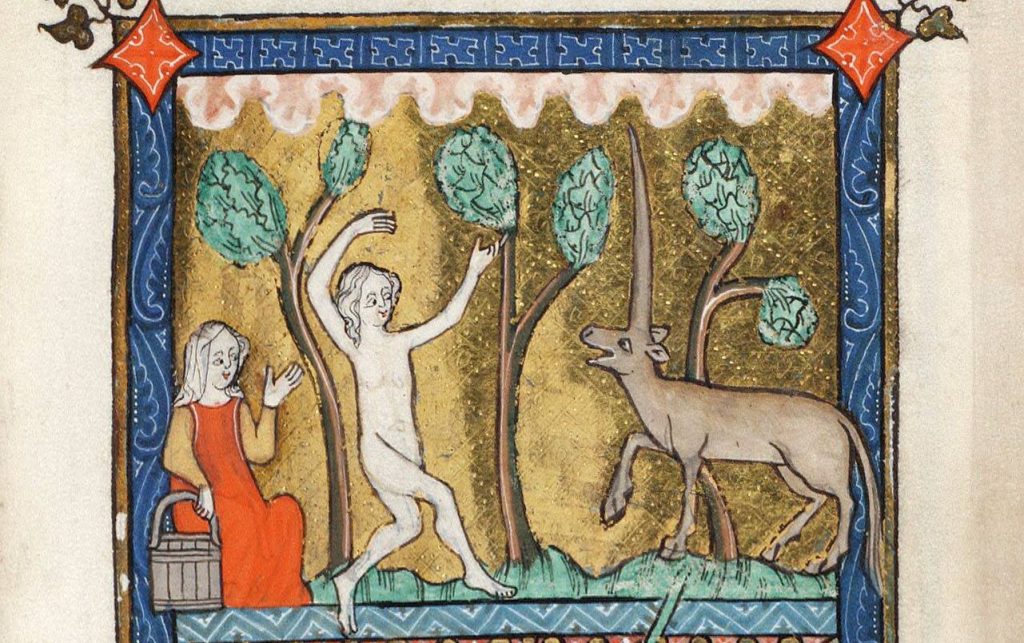
Next up, the Rothschild Canticles is an illuminated manuscript that was published during the turn of the 14th century in Flanders. Within the manuscript is a collection of prayers from the Bible, among other texts. In the image, we see the hunt for the unicorn. According to legend, a unicorn could only be captured by a virgin maiden’s allure. The odd part about this image is certainly the naked person flailing about as the unicorn almost smiles. Not only that but the sheer size of the unicorn’s horn is rather alarming.
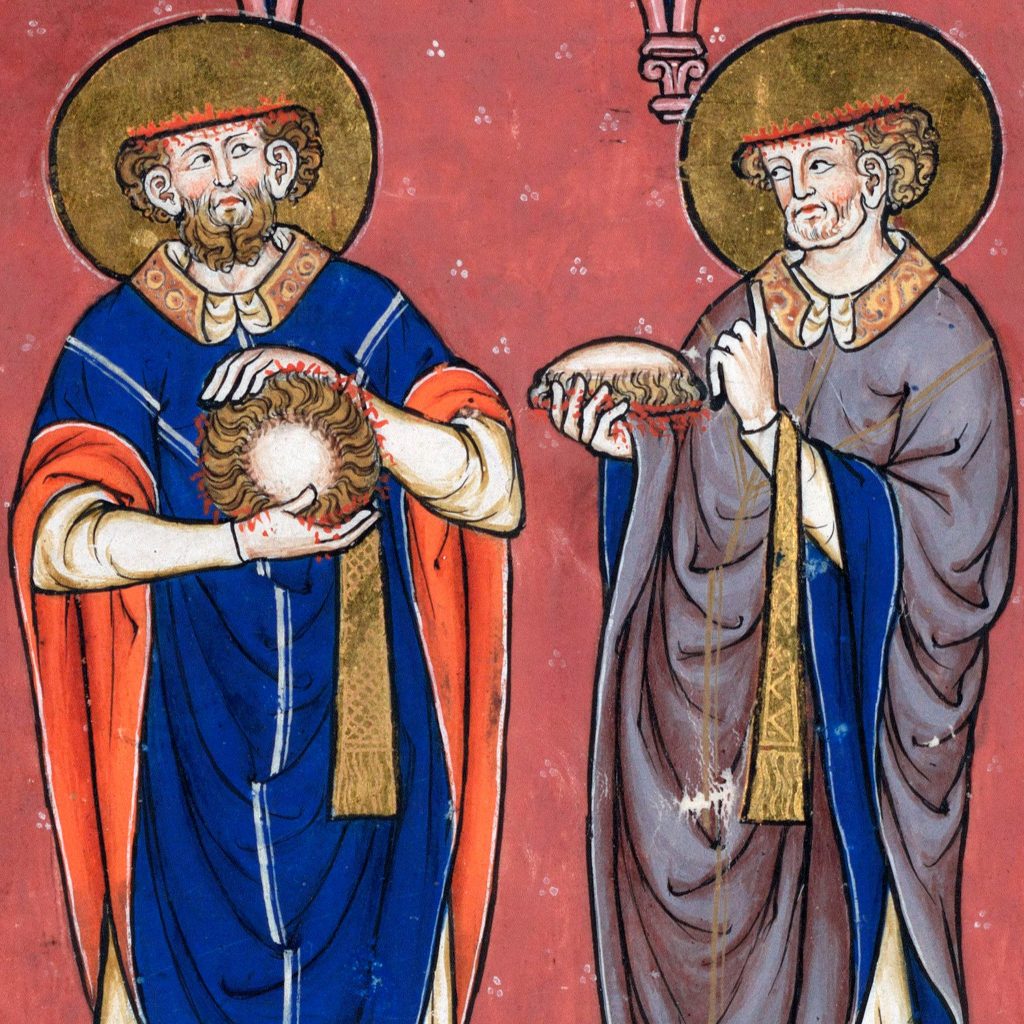
Lynda Dennison. “THE APOCALYPSE, BRITISH LIBRARY, ROYAL MS. 19 B. XV: A REASSESSMENT OF ITS ARTISTIC CONTEXT IN EARLY FOURTEENTH–CENTURY ENGLISH MANUSCRIPT ILLUMINATION.” The British Library Journal20, no. 1 (1994): 35-54.
Warren Ginsberg. “Dante, Ovid, and the Transformation of Metamorphosis.” Traditio 46 (1991): 205-233.
DailyArt Magazine needs your support. Every contribution, however big or small, is very valuable for our future. Thanks to it, we will be able to sustain and grow the Magazine. Thank you for your help!